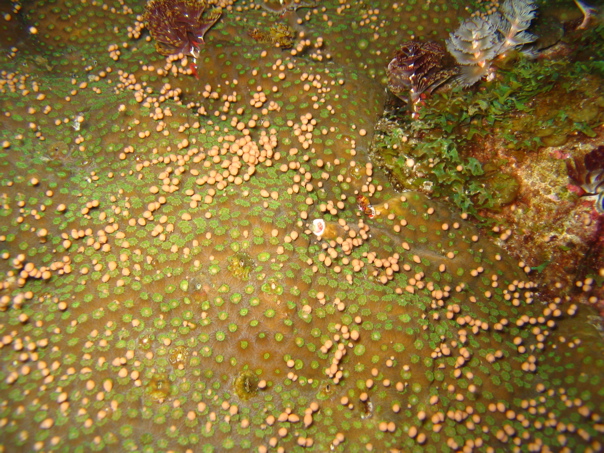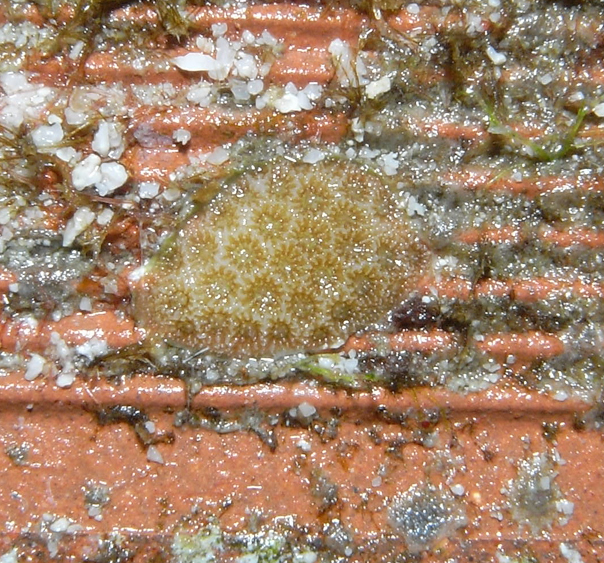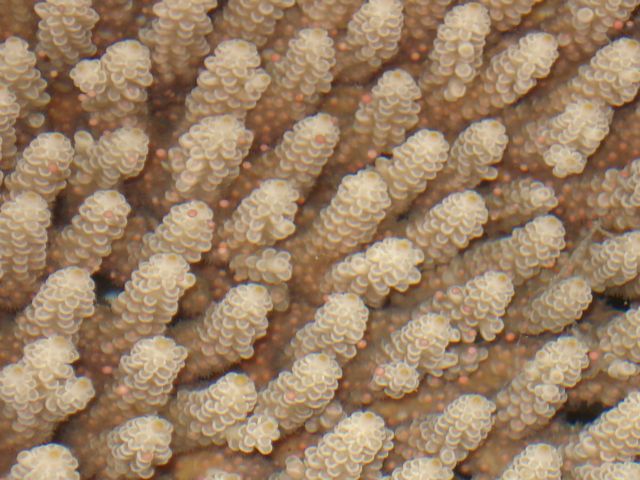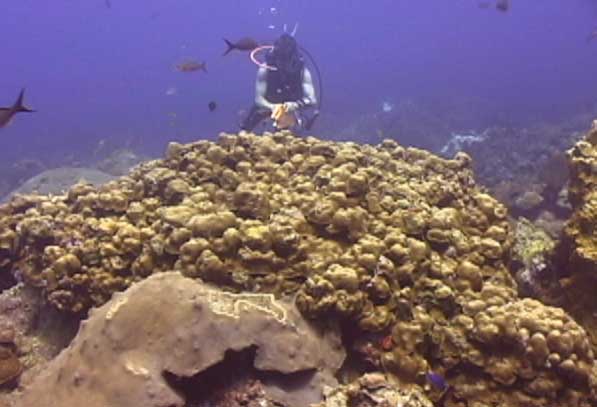Coordination of mass spawning behavior in corals
|
|
At work in the lab... |
Once per year, eight evenings after the August full moon, reef building corals in the Caribbean undergo a highly coordinated mass spawning event. Corals spawn at the same time every year, and each species has a unique time window it which it but none of the other species on the reef spawn. This timing is quite amazing, and for some species is predicable to within 5 minutes from year to year. How do corals know it is time to spawn? Our working hypothesis is that corals respond to lunar and solar light (but how?) and release both gametes and a chemical signal that tells other nearby individuals to also release. We are investigating behavioral, chemical, molecular and cellular components of this synchronized spawning event. Field work is performed in the Gulf of Mexico (Flower Garden Banks), in the Dutch Antilles (Bonaire/Curacao) and on the Great Barrier Reef (Australia). In the Gulf our favorite species (view photos and movies) are the blushing star coral S. intersepta and the great star coral Montastraea cavernosa while over in Australia it is Acropora millepora.
Work in our lab has demonstrated that light receptors regulate the time at which corals spawn and that this is a direct response to light perception- biological clocks are not involved. We are currently exploring the role of entrained circadian / circalunar rhythms in selecting the date of spawning. Techniques include microarrays, proteomics, gene cloning, cell biology, and bioinformatics.
A variety of field techniques are utilized including SCUBA (hot mixes, tri), rebreathers, ROVs and submarines. All field workers have advanced dive training.
We also have projects exploring coral ecology and the interaction between newly recruited corals (babies!), algae, and hervirorous vertebrates and invertebrates. This project utilizes a unique research platform that we built at a depth of 80' in the Flower Garden Banks National Marine Sancuary. The platform allows us to set up long term coral recruitment experiments under controlled conditions (see photo below).
Key references:
Hilton. D., Brady, A.K., Spapho, S. and Vize, P.D. (2012). Photoreception and signal transduction in corals; proteomic and behavioral evidence for cytoplasmic calcium as a mediator of light responsivity. Biological Bulletin 223: 291-299.
Brady. A.K., Snyder, K. and Vize, P.D. (2011). Circadian cycles of gene expression in the coral, Acropora millepora. PLoS One 6(9): e25072
A.K.Brady, J.D. Hilton and Peter D. Vize (2009). Coral spawn timing is a direct response to solar light cycles and is not an entrained circadian response. Coral Reefs,28: 677-680
Vize, P.D. (2009) Transcriptome analysis of the circadian regulatory network in the coral, Acropora millepora. Biological Bulletin 216; 131-137. (Editors pick- free full content)
Davies, S.W. and Vize, P.D. (2008). Effects of herbivore grazing on juvenile coral growth in the Gulf of Mexico. Proc. 11th ICRS, 23: 1220-1222.
Vize, P.D., Hilton, J.D., Brady, A.K. and Davies, S.W. (2008). Light sensing and the coordination of coral broadcast spawning behavior. Proc. 11th ICRS, 11: 385-388.
Vize, P.D. (2006). Deep water broadcast spawning by Montastraea cavernosa, M. franksi and Diploria strigosa at the Flower Garden Banks, Gulf of Mexico. Coral Reefs, 25, 169-171. This study used an ROV to monitor spawning in corals at depths of over 140 feet.
Vize, P.D., Embesi, J., Nickell, M. and Hagman, D.K. (2005). Tight temporal consistency of coral mass spawning at the Flower Garden Banks, Gulf of Mexico, from 1997 - 2003. Gulf Mex. Science, 23: 107-114.
Reichman, J.R., Wilcox, T.P. and Vize, P.D. (2003). Characterization and organization of the PCP gene family in Symbiodinium from Hippopus hippopus: low levels of concerted evolution among PCP genes contribute to predicted isoform diversity and spectral tuning of chromophores. Mol. Biol. Evol. 20: 2143-2154.
Hagman, D.K. and Vize, P.D. (2003). Mass spawning by two brittle star species, Ophioderma rubicundum and O.squamosissimum, at the Flower Garden Banks, Gulf of Mexico. Bull. Marine Sci. 72, 871-876
Hagman, D.K., Gittings, S. and Vize, P.D. (1999). Fertilization in broadcast-spawning corals of the Flower Garden Banks National Marine Sanctuary. Gulf Mexico Sci. 16: 180-187
 |
 |
 |

